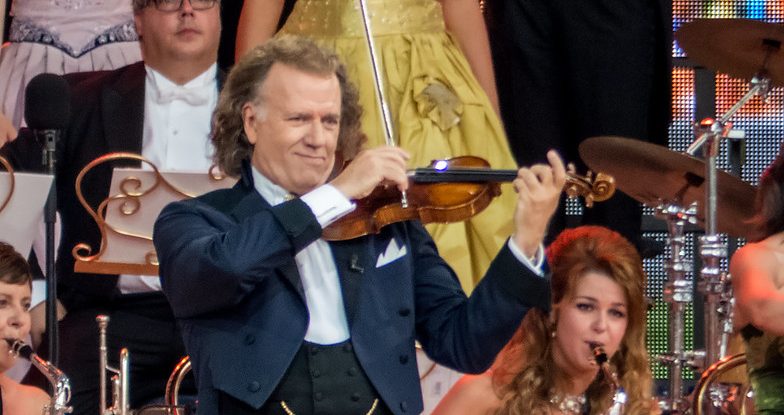
How to tell a story is the key to a successful presentation.
Because facts tell, but stories sell.
That’s what I was told in my early days in journalism.
I watched Novak Djokovic and Simona Halep explain why it was special to win Wimbledon.
And I listened to conductor Andre Rieu tell why he was stunned to watch Notre Dame burn.
The truth of that adage hit home.
It’s why our presentations and media interviews must be driven by stories.
Stories lie right at the heart of effective presentation skills.
Rather than cold facts.
I sat among thousands last weekend.
Listening in silence to Dutch conductor and violinist Andre Rieu.
His music was emotional and quite brilliant.
But his stories were just as compelling.
He told the audience:
“I sang in this church behind me from the age of five.
“And when I was six, it caught fire.
“It seemed all of Maastricht had gathered in the Vrijthof Square.
“Watching in horror as it burned.
“And so when Notre Dame went up in flames this year, I watched again in horror.
“It brought back memories of that terrible day in my home town.”
A spire of the centuries-old St. Servatius Church crashed to the ground in that 1955 fire.
As did a spire of Notre Dame, destroyed by fire this April.
We looked right to the Dutch church, now fully restored, as he painted his vivid pictures
Using only words.
The screen behind him showed the full horror of Notre Dame.
Fully ablaze.
I felt my eyes well up with emotion.
If you listen to an Andre Rieu track, it sounds much like any other orchestra.
But what the Dutch maestro does brilliantly is tell stories.
Stories about his childhood, learning the violin.
About the lifelong friends he made studying in the conservatoire.
Stories about the soprano who stood in at the last minute and enchanted the audience.
Tales about his orchestra breaking into song and music off-duty in a hotel.
And we can see the pictures he’s painting with his well-chosen words.
Because they’re vivid, clear and colourful.
Just like his orchestra.
The same weekend, Wimbledon cheered on its champions.
First, Simona Halep from Romania.
Then Novak Djokovic from Serbia.
Simona told us it was always her mother’s dream that she would make a Wimbledon final.
She went one better and won her first title there.
Novak talked of growing up watching Wimbledon.
It was always the tournament he wanted to win.
He’s done it five times now.
So what can we learn from Andre, Simona and Novak?
Well, they all told us the story behind their success.
They were uninterested in facts and figures.
They shared with us the emotional background to their feelings.
And made us feel emotional with them.
It’s what we ask our clients to do every day of the week.
If preparing a presentation.
Or a media interview.
Tell a story.
On every single presentation skills course we’ve run this year, we’ve asked clients to put a story at the top of their speech.
On every single media training course, we’ve asked them to tell a story about themselves that makes the point.
We’ve said this in Madrid, Nice, Dallas and Dubai.
In Oman and Qatar.
And in our Glasgow studios.
That way, you engage the audience right from the start.
And share their emotions with the listener and viewer.
That way you’re more likely to win a pitch.
More likely to secure a promotion.
More likely to be offered a job.
Or more likely to make the audience part with their money.
Quite simply because facts tell, but stories sell.
Bill McFarlan is co-Founder and Executive Chairman at Pink Elephant Communications in Glasgow.
You can read his full profile here.
Photos by Manel / CC BY-ND / Christopher Dart / CC BY / manhhai / CC BY / charlesng88 / CC BY / Marianne Bevis / CC BY-ND on Foter.com.
18th July 2019 Featured in: Blog, Presentation skills training blogs, Public speaking training blogs By: Pink Elephant
Some media trainers knock you down…and leave you down. Our media coaches show you how to deal with each knock…and still win through. So you have the presentation skills to perform – with confidence.